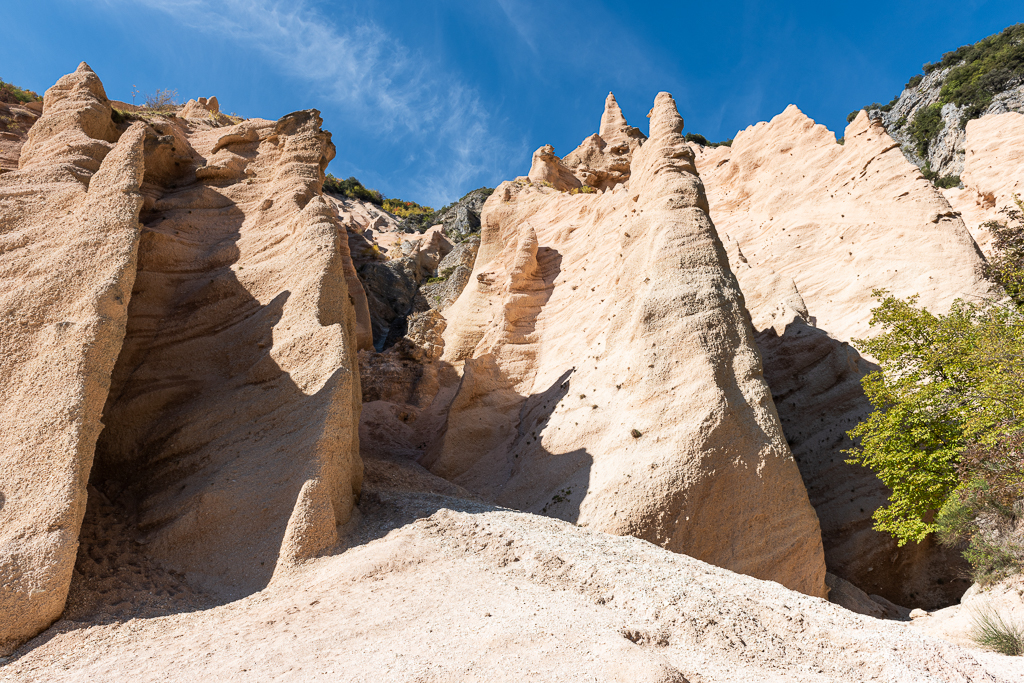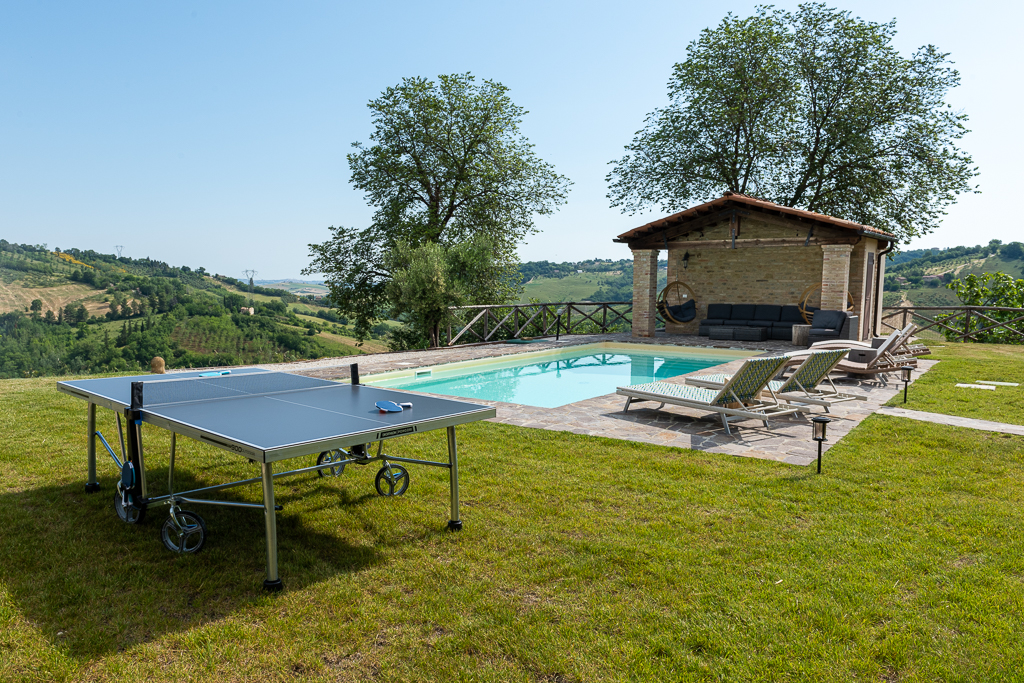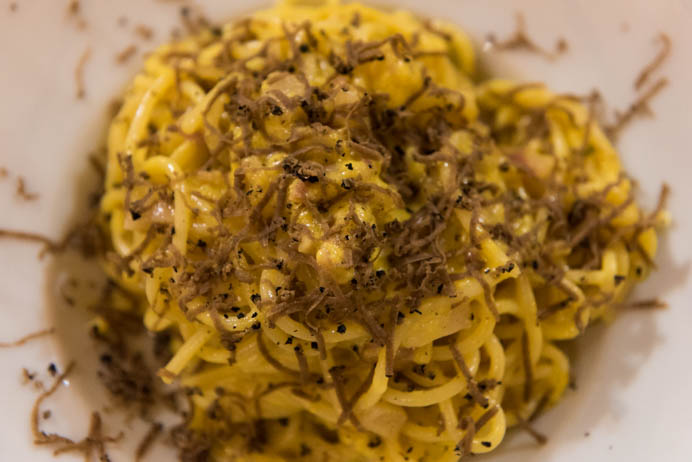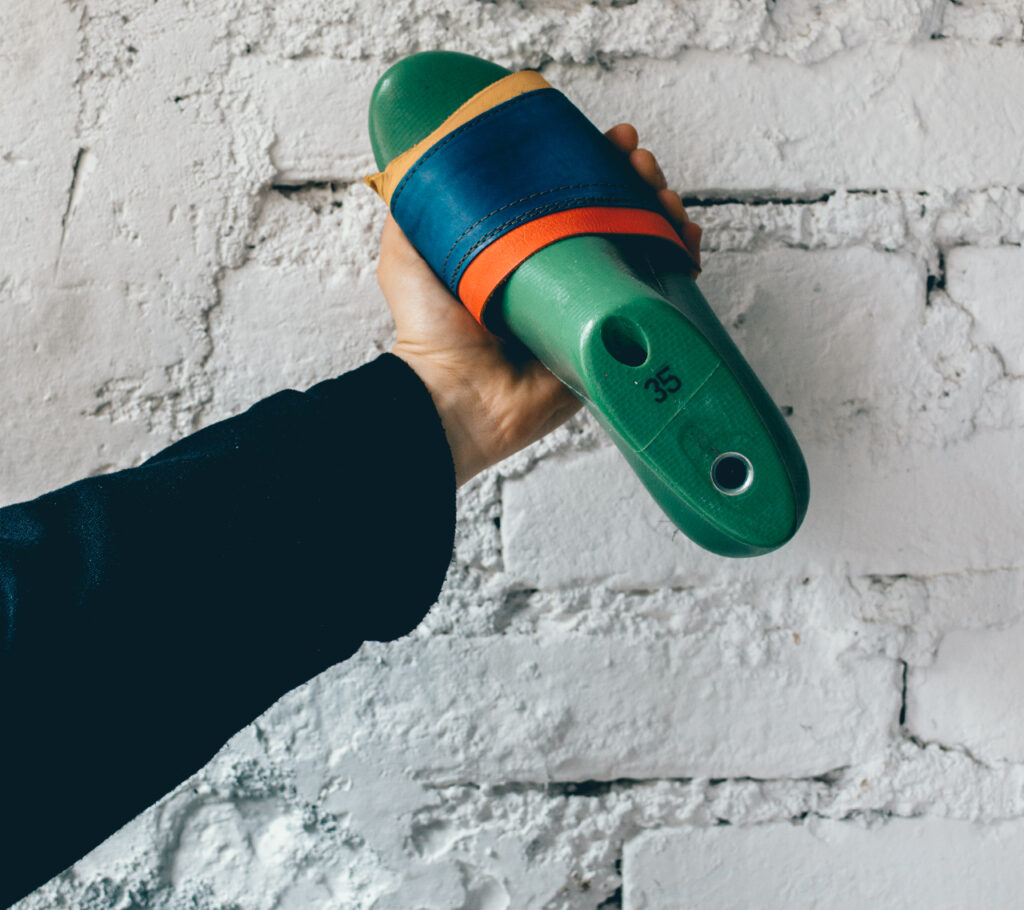
At Casa Pace e Gioia we are lucky because there are so many things to do in our area, all year round. So we put together our version of an ideal summer week at Casa Pace e Gioia that introduces you to the Marche’s nearby hidden gems, and also gives you time to relax in the quiet countryside, without hurry. Because when returning home, no one wants to feel like they need to recover from their vacation. Presenting our 7 Perfect Summer Days in the Marche…
Day 1:
Arrive and relax with a glass of wine, wander the grounds and take in the views.
If it’s lunchtime, try Osteria San Nicola, il Santo Bevitore, or Alimentari Fioretti in the historic center of Tolentino, a 15 minute drive.
In the afternoon after the shops reopen, head to nearby Colmurano and pick up award-winning wines directly at the Saputi family’s cantina. They’ll treat you to a quick tasting if you’d like to try before you buy. Then head to the renowned bakery I Sette Artigiani, for breads and sweets. Up the main street through town you’ll find an excellent butcher, a small but well-stocked grocery store, and a large fruit and vegetable market with delicious olives.
There should be enough time for a swim or to relax in the hanging chairs before your Private Chef is ready to serve your Welcome Dinner! You’ll dine under the loggia with views of the sun setting over the valley and depending on the month, fireflies. Your private chef will prepare traditional local foods, paired with wine, and explain the provenance. They’ll also clean up everything, so no mess for you to deal with.

Day 2:
You’ll spend the day on a Wine and Food Tour with Marco’s Way.
Marco will pick you up at 9 AM for an unforgettable introduction to our local foods and wines. You’ll visit 2-3 small family owned wineries that use native grapes to make a stunning variety of exceptional wines. He will also take you to a local olive oil producer for a tour and tasting. You’ll lunch very well at a winery or a local typical restaurant. Marco is a native Marchigiano who has a wealth of history and information about the area which will further enrich your tour.
Once home, if you have any room, find a casual dinner nearby, like Il Muretto, Pizzeria Best Of, or L’Approdo.

Day 3:
Tour the nearby First-century Roman ruins of Urbs Salvia with a guide to put it all into context for you. Preserved by a landslide, the ruins are now excavated and scattered among the 40 hectare archeological park, where they continue to unearth more discoveries. The upper part in Urbisaglia includes the aqueduct reservoir, within the city walls, which shows how the Romans engineered a safe water supply. Descending the hill, you’ll see the theater, the amphitheater, and the temple with first-century frescoes.
Also in Urbisaglia, La Rocca is a 12–15th century castle overlooking Piazza Garibaldi. It has amazing views of the countryside from its four towers. Enjoy a gelato, caffè, or an aperitivo at our favorite bar in the piazza that faces the church behind La Rocca.
Lunch in Urbisaglia under the loggia at Le Logge, a favorite restaurant of many. The Tombolini family is welcoming and Chef Andrea offers creative interpretations of traditional local dishes.
Enjoy the afternoon at home in the pool.
For dinner tonight you’re headed to Il Sigillo in the lovely medieval town of Camporotondo di Fiastrone. Il Sigillo is an intimate family owned restaurant with stone walls and a relaxing ambiance. Stefano, who runs the front of the house, has curated an excellent wine list and is an expert at pairing them with the delicious homemade dishes that his sister and mother make. Save room for Cinzia’s special desserts.

Day 4:
Sleep in and get a good night’s rest after what might have been a late evening. Hang out in the pool, play bocce or ping pong.
At lunchtime, drive to the nearby Abbadia di Fiastra Natural Reserve. Eat on the patio at Ristorante da Rosa, and pick from many traditional local dishes and seasonal specials. Their homemade ravioli is particularly outstanding, and their homemade desserts are fabulous.
Walk off lunch along the walking trails throughout the park, including one designed without obstacles for the visually impaired and incorporates the senses of hearing, touch, and smell. Another trail traverses past a woodland area and is the last example of the historical forests that once covered Le Marche.
Visit the park’s namesake Abbey Church, founded in 1142 and one of the best-preserved Cistercian abbeys in Italy. The cloisters are particularly beautiful. The Farm Museum, the Archaeological Collection, and the Wine Museum provide a fascinating history to this unique area.
Dine in the historic city center in Tolentino at il Santo Bevitore, known for their creative seafood dishes and excellent wines to pair with them. If you haven’t already, stroll down the block to admire our notable clocktower and continue on to the nearby Basilica of San Nicola and its peaceful cloister.

Day 5:
Today you’re driving to the Sibillini National Park to reach the trailhead of the hike to the Lame Rosse. The famous“Red Blades” are unusual and amazing rock pinnacles and towers caused by erosion and held together by clay and silts. In the mornings they glow red, but they are spectacular any time of the day. The 7 kilometer hike takes about 3 hours round trip and begins with a walk over the Fiastra Lake and the dam that created it.
When you’ve finished your hike, lunch at nearby Rifugio di Tribbio which has a peaceful position in the mountains and fantastic local dishes.
After lunch, drive up the narrow road to the ruins of the Malagotti castle and the church of San Paolo. From the summit, admire the panoramic view of the Fiastra Lake and wander among the ruins, scattered with wildflowers and frequented by birds.
Take a scenic route back and head towards Bolognola, Sassotetto, and Sarnano to experience more of the park. You may encounter sheep in the road and see cows grazing in the fields. Wild orchids, other wildflowers, and flowering trees often line the roadway.
The medieval fortified town of Sarnano is named one of the Most Beautiful Villages in Italy. Park in the piazza and walk through the gate to wander the concentric circles of this attractive brick town.
From Sarnano, it’s an easy drive on SP78 to return home.
After a long day hiking, for dinner, take it easy and have a pizza night. Il Muretto in Colmurano is only 5 minutes away and has excellent pizzas. They also have take out if you prefer to eat at home.

Day 6:
After hiking the mountains, relax at the beach!
The closest beach is 30 minutes away at Civitanova Marche where both the North and South beaches have Blue Flag status for cleanliness and quality. Select one of our recommended beach chalets and rent chaise loungers and umbrellas for the day, several chalets also have beach sports and kids activities.
Alternatively, the Mount Conero coast beaches south of Ancona are just an hour away. Under tall cliffs dotted with villages, these suggestive beaches boast a beautiful panorama. Stand up paddling, canoe rentals, windsurfing, and kitesurfing are offered. You can also rent an inflatable boat and see the famous “Due Sorelle” rock formation and spend your day on a beach accessible only by boat.
No matter what area you choose, have lunch on the beach barefoot or at a nearby waterfront restaurant where you’re certain to find fresh Adriatic seafood on the menu.
If you make it back to the house in time for dinner, I suggest Terra Nostra, in nearby San Ginesio, where you can eat inspired local dishes outside with a view of the mountains and the setting sun.

Day 7:
It’s your last day. So you’re enjoying it fully, at home in the pool, playing lawn games or ping pong. If you don’t have leftovers for lunch, head to Norcineria. It’s very close by, casual, they have outdoor dining, a playground for kids, and delicious antipasti, pastas, sandwiches, meat dishes and more.
For your last dinner, if you have not yet been, definitely try Ristorante Pizzeria L’Antico Approdo. It’s one of our favorites. It’s also nearby, casual, family-friendly, with indoor and outdoor seating, and a broad menu that give you a chance to try your favorite Marchigiano dish one last time.

Day 8:
Checkout isn’t until 11 o’clock and we sometimes have complimentary late check outs available, just ask! Have some breakfast and pack calmly. There’s time for a morning coffee (and/or Prosecco) from the hanging chairs and one last swim before you leave.
Reserve your perfect week here.
Contact me and I’ll create a custom itinerary for you.
A 14 day itinerary is coming soon!













